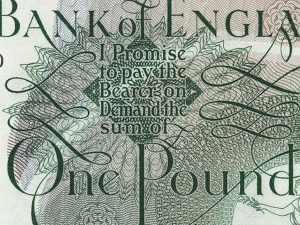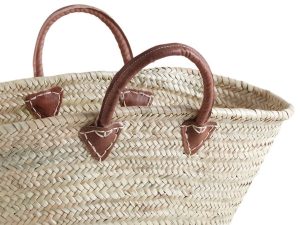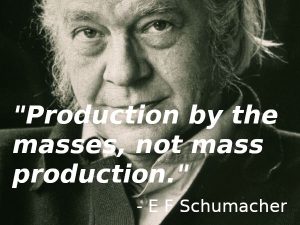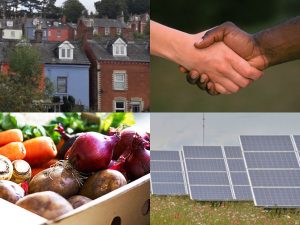Fair trade - introduction
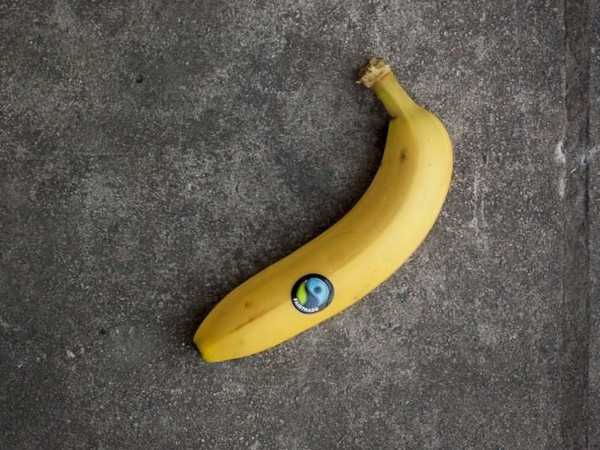
“Goods produced under conditions which do not meet a rudimentary standard of decency should be regarded as contraband and not allowed to pollute the channels of international commerce.” – Franklin D. Roosevelt
“Fair trade is all about improving lives, but we don’t do that through charity – there is no hand out in the Fair trade movement. People are solving their own problems through Fair trade.” – Paul Rice
Contents
What is Fair trade?
The Fair trade movement is about getting a better deal for farmers and workers in the Global South, who produce many of the basic commodities we take for granted, like tea, coffee, sugar etc. (even gold). International trade has traditionally penalised the poorest and weakest producers, so Fair trade aims to help break the cycle of exploitation by implementing fairer terms of trade and obliging companies to pay producers at or above the market rate.

History
The first Fair trade label appeared in the late 1980s in the Netherlands. More labelling initiatives began to appear across Europe and North America, culminating in the establishment of the Fairtrade Labelling Organization (now Fairtrade International) in 1997 to unite the different initiatives and harmonise standards. Fairtrade International is an international non-profit composed of the UK’s Fairtrade Foundation and similar partner organisations around the world. The Foundation itself was established in the early 1990s by NGOs like Oxfam and the Women’s Institute to promote Fair trade in the UK. The producers that Fairtrade was set up to benefit have themselves taken on a greater role in the activities of the board and governance since 2002, and today have an equal say in running the global movement and 50% ownership of Fairtrade International.

The Fairtrade certification mark first appeared in 2002, and works like this. Since then, many more countries have come on board. The basic labelling scheme remained largely unchanged till 2014, when the Fairtrade Sourcing Program was introduced for cocoa, sugar and cotton. This represented a major change in that it allows participating companies to source one or more specific commodities for use in a range of products, rather than all the ingredients in a specific product having to qualify as Fair trade in order to be awarded the mark.
How it works
Fairtrade International runs the certification scheme and writes the Fairtrade standards which must be adhered to by producers to qualify for Fairtrade certification. The standards have a number of developmental pillars and vary depending on the commodity and group in question (e.g. the standard for gold is different to that for sugar). Standards are written in collaboration with producers with the aim of helping them work their way out of poverty. Producers are regularly independently audited to ensure they’re sticking to the rules.
There are now over 4,500 Fair trade products available, from tea to coffee, chocolate, bananas, wine, sugar, rice and many more. Fairtrade International also certifies non-food commodities like gold, silver and platinum, cotton, cut flowers etc. See here for a full list. As long as a standard exists, and they can be connected to the market, any producer is eligible to get involved.
In the UK, the Fairtrade Foundation licences use of the Fairtrade mark and works with companies and retailers to make sure they carry it. It also campaigns to raise awareness and create demand for Fair trade products.

What are the benefits of Fair trade?
Personal / self-provisioning
Fair trade is about changing the conditions of global trade, rather than self-provisioning – but it brings personal benefits to both producers in the Global South and consumers in the North.
Producers / Global South: Getting a better price for their labour means improved quality of life and working conditions for producers, and a greater degree of control over their lives. Being part of a Fairtrade scheme also helps them overcome certain obstacles. Fair trade groups work with them to help improve productivity, and to provide training in business skills, environmental protection, dealing with global warming and any other issues that affect their crops.
Human and labour rights are also written into the standards. Child labour, for example, is prohibited.
Consumers / Global North: When you buy a product with the Fairtrade mark, you know that the person at the other end of the production chain has been paid a fair price for their labour. You know your choices as a consumer are contributing directly to their getting out of poverty.

Environmental
Fair trade standards stipulate environmentally-sound agricultural practices – responsible, sustainable use of natural resources like water, maintenance of soil fertility, minimal use of agrochemicals, good waste management, no genetically-modified organisms (GMO) etc. Fair trade doesn’t necessarily mean organic, but the two often go hand in hand, and organic production is encouraged and rewarded by higher Fair trade minimum prices.
There’s a more abstruse environmental benefit of Fair trade too – in that wealth directed away from the corporate sector reduces its ability to influence states and defend the hugely-destructive status quo.

Community / decentralising power away from corporations
Fair trade provides a bit of extra money in the form of the Fairtrade Social Premium which goes into a communal fund to help locals develop projects and initiatives in their community. The main benefit though, is that it reduces (or at least attempts to reduce) the extraction of wealth from communities, which therefore reduces wealth concentration in the corporate sector, and its infiltration into the political system. This means that Fair trade can help promote real democracy.
Criticism
There are two types of criticism of the Fair trade movement.
The first type is based on how much money reaches farmers, corruption, the fact that farmers not in Fair trade schemes are disadvantaged or that the approach isn’t radical enough. Much of this criticism is valid, and can be addressed, so that the system is improved and problems ironed out.
The second type is political – initiated and funded by the corporate sector, because the Fair trade movement exists to benefit small farmers, and involves co-operatives that divert money away from corporations. We have to be vigilant when distinguishing between these two types of criticism – the former is valid, but the latter is about Fair trade threatening corporate profits, by distributing it to small farmers worldwide. This kind of criticism should encourage the Fair trade movement, because it shows that it’s working. More on this here.
What can I do?
Look for products carrying the Fairtrade mark in shops, cafés and restaurants, catering suppliers and wholesalers. Check the Fairtrade website to find out where to buy, including from shops that are part of BAFTS (British Association of Fairtrade Shops) as they often have products that aren’t available in mainstream stores. If you can’t find the product you’re looking for, ask store managers to stock it; part of the success of Fair trade is down to consumer-led demand.
If possible, buy from BAFTS and independent suppliers, who are much more likely to be really on board with Fair trade principles, and to make sure that as much of the premium as possible goes to the producers. Large supermarkets are likely to take as much of the premium price for themselves as they can. Supermarkets don’t do it for love – they do it for profit. They already squeeze small farmers in the UK, so why wouldn’t they squeeze small farmers overseas?

Contrary to what you might think, buying Fair trade isn’t necessarily more expensive; there are very affordable Fair trade own-brand products or lines – from bananas to gold wedding rings – available on the High Street.
Check out Fairtrade Fortnight, which aims to raise awareness and get people to think about where the stuff they buy comes from and how their choices can positively impact on people on the other side of the world.

There are lots of ways to get more involved with the Fair trade movement. The Fairtrade Foundation runs campaigns with local community groups; Fairtrade towns, faith groups, schools and universities exist across the UK, all of which have either made a commitment to stocking Fair trade products, or to ongoing campaigning, teaching and raising awareness. Look for a group near you on the website, and if there isn’t one, then maybe you can be the first to start one?
Further resources
- A response to criticisms of Fair trade (and another one)
- World Fair Trade Organisation
- Fairtrade International – international labelling and standards
- Fairtrade Foundation – UK
- Flocert – certification for Fair trade
- British Association of Fair Trade Shops – find your local Fair trade shop
- Public Citizen – fighting for a fairer global economy
- Fair trade campaign action guide
Specialist(s)
Thanks to Martine Parry of the Fairtrade Foundation for information
The specialist(s) below will respond to queries on this topic. Please comment in the box at the bottom of the page.

Martine Parry of the Fairtrade Foundation is a communications expert with a background in in Fair trade, sustainability, international development, consumer and corporate communications.

